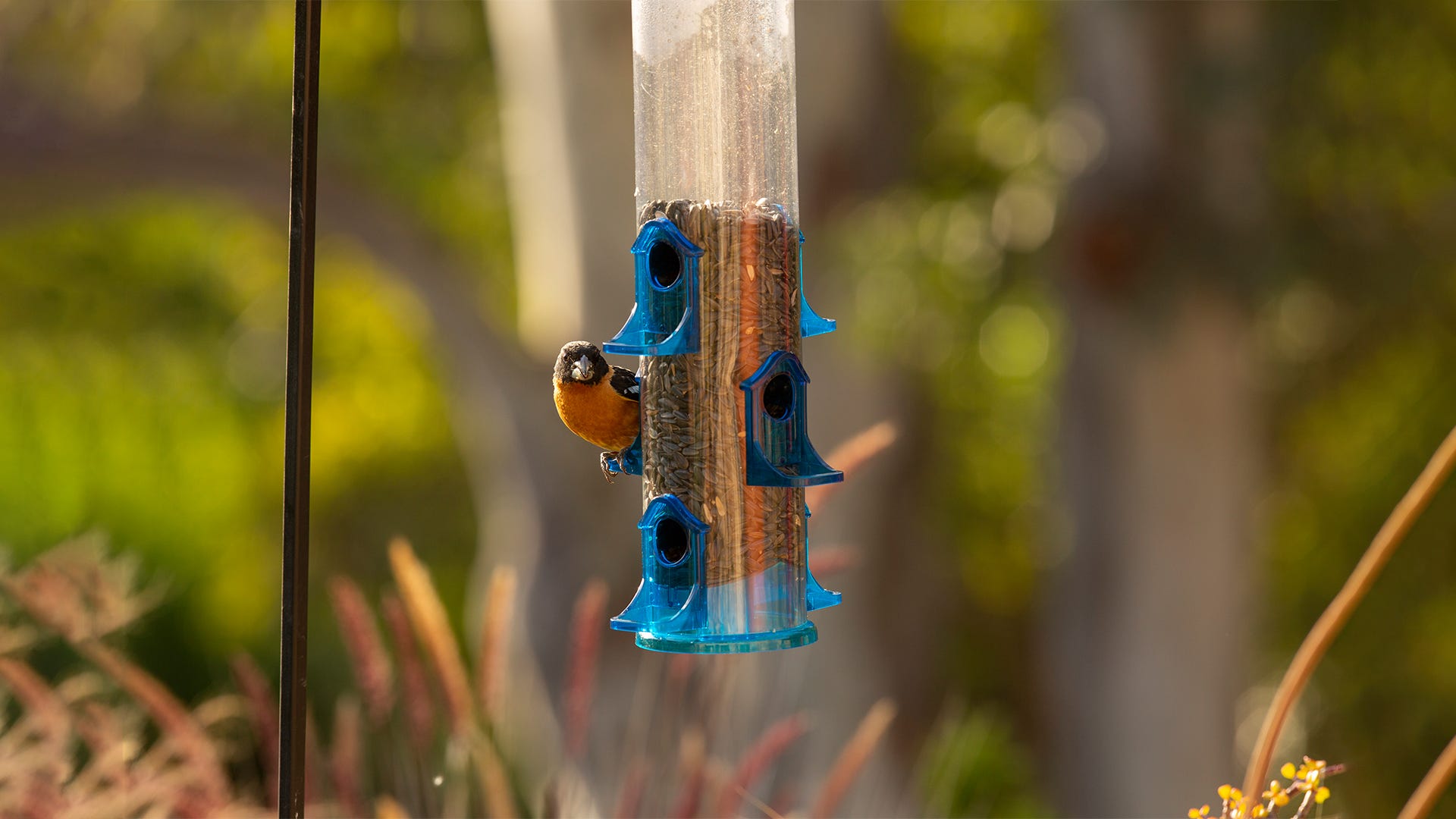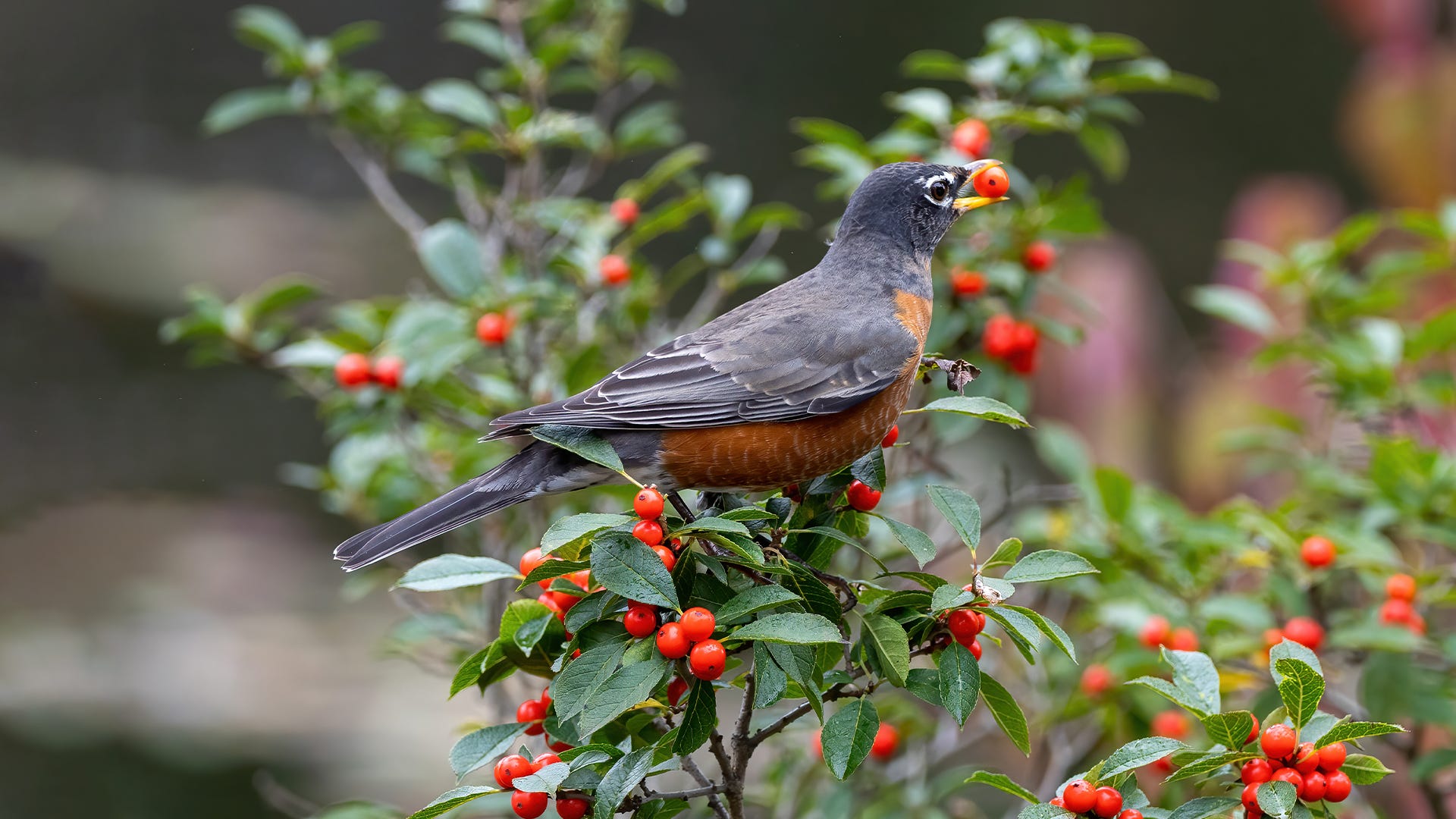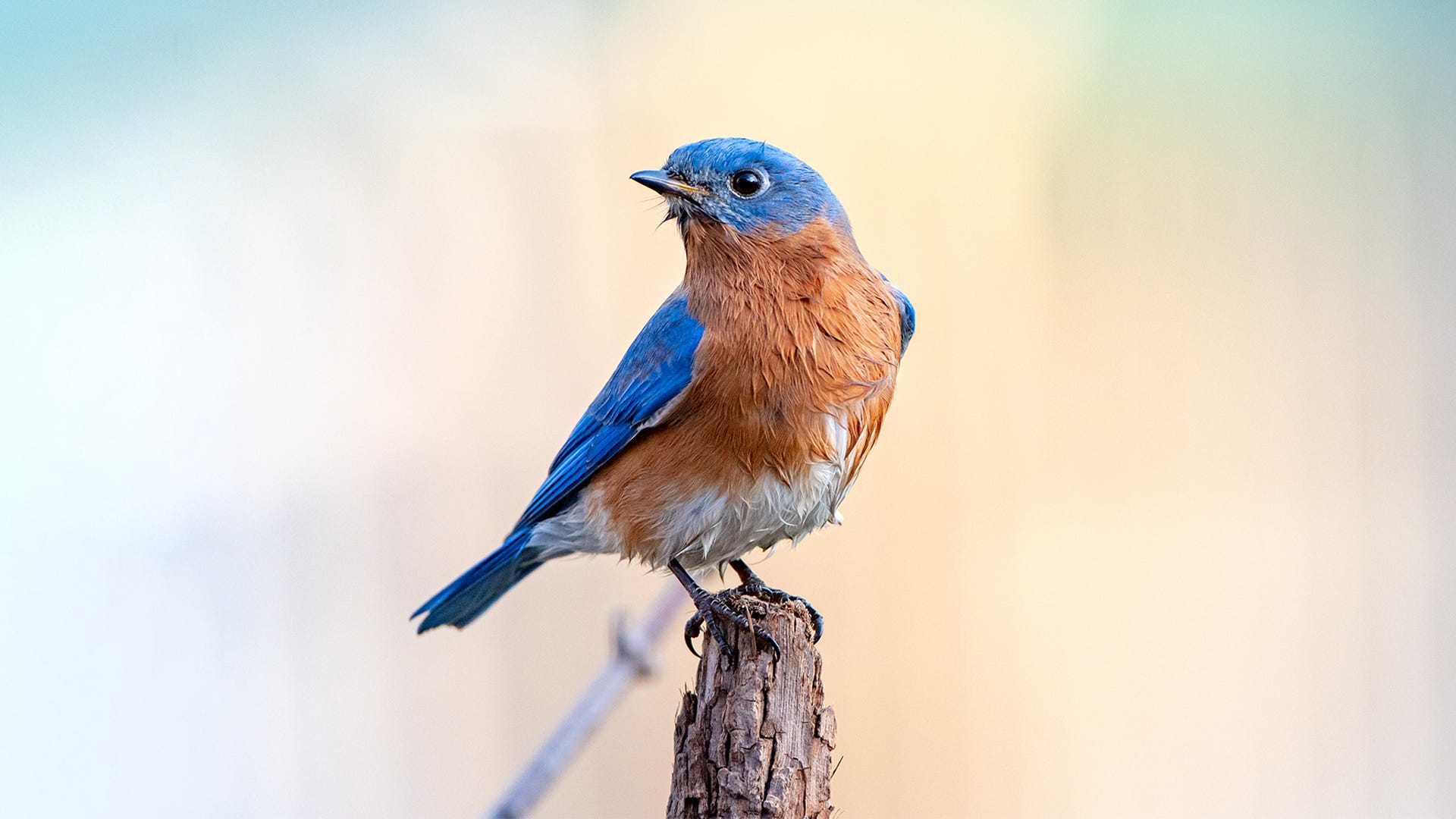
Bluebirds are symbols of happiness, and they certainly make bird lovers happy! These simple steps will help you create a welcoming habitat for your favorite small birds.
Give Bluebirds Space—Open Up the Place
Bluebirds love broad, open areas surrounded by a few mature trees, minimal underbrush, and low ground cover. Keeping your grass trimmed provides bluebirds with lawn space (untreated by chemicals) to hunt insects and get the food they need. Bluebirds are a ground-feeding thrush, so they love foraging in grassy ground for protein-packed bugs.
See also: Birdscaping: 10 Tips for How to Attract More BirdsAdd a Post to Attract the Most
Bluebirds love insects and can spot insect prey over 60 feet away! Adding 3- to 4-inch tall perching space like an old wooden pole gives bluebirds the perfect perch from which to search for food. Bluebirds can consume up to 2,000 insects in a single day (and they love mosquitoes). Now that’s natural pest control!
Mealworms: A Delicious Treat that Is Hard to Beat
Bluebirds love insects, moths, and larvae, so offering mealworms in a dish feeder is a great way to supplement bluebirds’ insect hunting routines. Bluebird bug consumption is particularly robust during nesting season—bugs provide little nestlings crucial protein for healthy development. Mealworms are very easy to use and store and are excellent for attracting bluebirds.
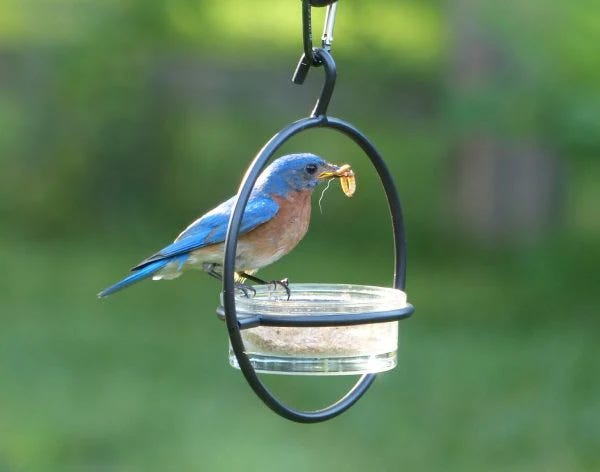
Dead trees? Yes, please!
Bluebirds love to use dead trees for nesting and roosting sites. When it’s safe for you, your family, and your property, consider leaving dead tree limbs on live trees or even whole dead trees standing so that bluebirds have a place to stay when they visit your yard as well as a safe place to rear their young.
Nest Inside the Box
In addition to leaving dead trees intact, you can put up nest boxes to give foraging bluebirds a place to call home. In some areas, bluebirds start looking for nesting space as early as January or February, so it’s a good idea to keep your nest boxes up all year long. Give your nest box a nice cleaning after each brood flies away and at the end of the year to prepare for the upcoming nesting season. Add a baffle to keep raccoons, cats, and other four-legged predators away from those precious little blue eggs.
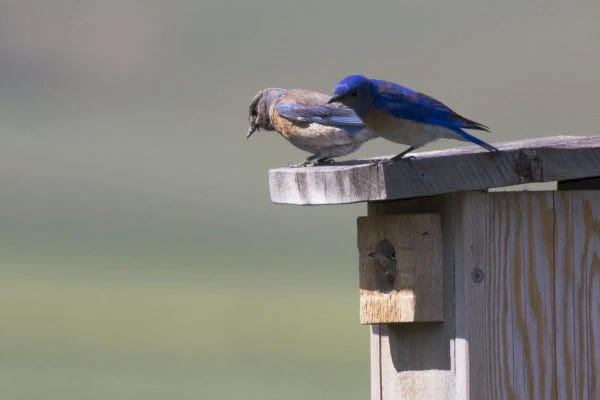
Roost Boxes Mean Winter Warmth
Roost boxes are specially designed to trap in more heat so birds don’t have to work as hard to stay warm when the chilly weather rolls around and also provides the widest variety of birds a place to perch away from predatory threats. Unlike nest boxes, these roost boxes are meant to pack in a crowd—as many as a dozen birds can use a single roost box for shelter from the elements and ever-present danger. This may help to attract wintering bluebirds to your yard. The more the merrier when staying safe and warm!
See also: How to Clean and Winterize Your Bird HouseNative Plants for the Winter Advantage
Your gardening can help bluebirds find food! Bluebirds shift gears from insects to berries and fruit in the wintertime, so planting native berry bushes, trees, and shrubs help wintering bluebirds find the food they need. Bluebirds don’t always migrate south in the winter—sometimes they forage in smaller flocks for wild fruits and berries in wooded areas. It’s best to use native plants when gardening because these species are already adapted to your region’s climate and local bluebird populations are used to them already.
Send Bluebirds Hugs—Encourage Bugs
When winter retreats, bluebirds go back to eating insects as their primary food source. Never use insecticides, as bluebirds and many other songbirds need a healthy natural insect population to feed their young. The more baby birds that survive, the more insects they consume, providing a proportional check on the sometimes exponential growth of insect populations. Welcome local bluebirds and make a world of difference!






